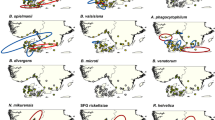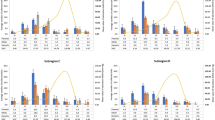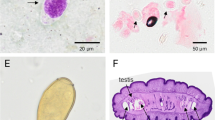Abstract
TICK paralysis, as reviewed by Abbott1, is a disease affecting man, cattle, sheep and dogs in many parts of the world. Here, in the Pacific north-west, the causative tick is Dermacentor andersoni Stiles. The symptoms are characterized by an ascending flaccid paralysis progressing ultimately to bulbar involvement and death due to respiratory failure. It begins after the female tick has been feeding for some days (usually 4–7) and is reversible on the removal of the tick.
This is a preview of subscription content, access via your institution
Access options
Subscribe to this journal
Receive 51 print issues and online access
$199.00 per year
only $3.90 per issue
Buy this article
- Purchase on SpringerLink
- Instant access to full article PDF
Prices may be subject to local taxes which are calculated during checkout
Similar content being viewed by others
References
Abbott, K. H., Proc. Staff Meetings Mayo Clinic, 18, 39, 59, 62 (1943).
Ross, I. C., J. Council Sci. and Indust. Res., 8, 8 (1935).
Author information
Authors and Affiliations
Rights and permissions
About this article
Cite this article
ROSE, I., GREGSON, J. Evidence of a Neuromuscular Block in Tick Paralysis. Nature 178, 95–96 (1956). https://doi.org/10.1038/178095a0
Issue date:
DOI: https://doi.org/10.1038/178095a0
This article is cited by
-
Intra-aural tick bite causing unilateral facial nerve palsy in 29 cases over 16 years in Kandy, Sri Lanka: is rickettsial aetiology possible?
BMC Infectious Diseases (2018)
-
Histamine blocking agent in the salivary gland homogenate of the tick Rhipicephalus sanguineus sanguineus
Nature (1977)
-
Die durch Argas (Persicargas) persicus-Larven bedingte Paralyse der Hühner
Zeitschrift für Parasitenkunde (1971)



